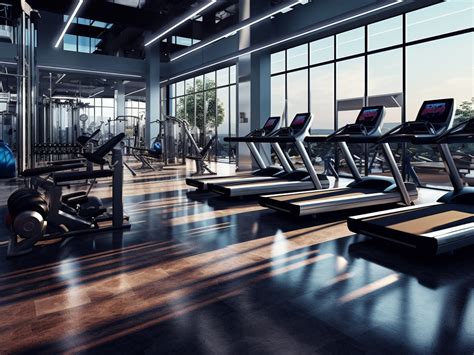For peak strength: What specific intensity methods break stubborn muscle plateaus?

Understanding the Stubborn Strength Plateau
Every serious lifter eventually encounters the frustrating wall known as a strength plateau. This is the point where your progress stalls, your lifts stop increasing, and your muscles seem unwilling to grow further, despite consistent effort. Plateaus often arise when your body has fully adapted to your current training stimulus. To overcome this, you need to shock your system with novel and intense demands, forcing it to adapt and grow stronger.
The key lies in manipulating training variables beyond just adding more weight or reps. We’re talking about intensity methods that challenge your muscles in new ways, recruiting more muscle fibers, increasing time under tension, or pushing beyond conventional failure points. These techniques are not for beginners but are essential tools for experienced lifters aiming for peak strength and continuous muscle development.

High-Intensity Training Methods to Shatter Plateaus
1. Drop Sets
Drop sets involve performing an exercise until muscle failure, then immediately reducing the weight by 10-20% and continuing for more reps until failure again. This process can be repeated for 2-3 drops within a single set. This method maximizes muscle fiber recruitment and time under tension, pushing your muscles far beyond their usual limits.
- How to apply: Choose one exercise per muscle group and incorporate 1-2 drop sets at the end of your workout.
- Benefit: Excellent for hypertrophy and muscular endurance, creating significant metabolic stress.
2. Rest-Pause Training
Rest-pause training involves performing a set to near failure, racking the weight, resting for a very short period (10-20 seconds), and then performing a few more reps with the same weight. This allows for a brief recovery of ATP and CP, enabling you to squeeze out more high-quality reps within a set.
- How to apply: Pick a heavy weight you can lift for 4-6 reps, hit failure, rest 15 seconds, perform 2-3 more reps, rest 15 seconds, and perform 1-2 final reps.
- Benefit: Builds raw strength and muscle density by increasing total volume with heavy loads.

3. Cluster Sets
Similar to rest-pause but with more structured short breaks *within* a set, cluster sets involve breaking down a larger set into several mini-sets with short (10-30 second) intra-set rests. For example, instead of 1×10 reps, you might do 2 reps, rest 20s, 2 reps, rest 20s, and repeat for a total of 10 reps. This allows you to use heavier weights for more total reps than you could in a traditional straight set.
- How to apply: Use 80-90% of your 1RM, perform 1-3 reps, rest 10-30 seconds, and repeat for your desired total reps (e.g., 3x(3 reps + 20s rest) for a total of 9 reps).
- Benefit: Maximizes power output and strength gains by allowing for more high-quality reps with heavier loads, reducing fatigue accumulation within the set.
4. Eccentric (Negative) Training
The eccentric phase of a lift (lowering the weight) is where you are typically strongest. Eccentric training focuses on extending this phase, often using heavier-than-normal loads with assistance on the concentric (lifting) phase. This causes significant muscle damage and stimulates growth.
- How to apply: Use a weight 110-120% of your 1RM. Have a spotter help you lift the weight, then slowly lower it yourself over 4-6 seconds.
- Benefit: Superior for strength gains and muscle hypertrophy due to increased mechanical tension and muscle damage.

5. Forced Reps and Partial Reps
Forced Reps: After reaching muscular failure on a set, a spotter assists you in completing 1-3 additional repetitions. This pushes your muscles beyond voluntary failure, recruiting more muscle fibers and increasing intensity.
Partial Reps: Performing reps through only a portion of the range of motion, often the strongest part, allows you to lift heavier weights or continue a set beyond full-range failure. This can help strengthen specific sticking points.
- How to apply: Use sparingly and with a reliable spotter for forced reps. For partials, incorporate them at the end of a full-range set or as a dedicated overload technique.
- Benefit: Overload muscles with heavier weight or higher volume, leading to increased strength and hypertrophy.

Strategic Implementation and Recovery
These intensity methods are powerful tools, but they are also highly demanding on your central nervous system and muscles. They should be used strategically and not on every set or every workout. Overuse can lead to overtraining, injury, and further plateaus.
Consider incorporating one or two of these techniques for 2-4 weeks, then rotating them or returning to more conventional training for a period. Adequate nutrition, sufficient sleep, and planned deload weeks are even more critical when implementing such high-intensity strategies to ensure proper recovery and adaptation. Listen to your body and prioritize form over lifting maximal weight.

Conclusion
Breaking through stubborn strength plateaus requires moving beyond your comfort zone and employing intelligent training strategies. Drop sets, rest-pause, cluster sets, eccentric training, and forced/partial reps are all highly effective intensity methods that can shock your muscles into new growth and strength adaptations. By strategically integrating these techniques into your routine and prioritizing recovery, you can continue to challenge your body, unlock new levels of strength, and achieve the peak physique you’re working towards.








